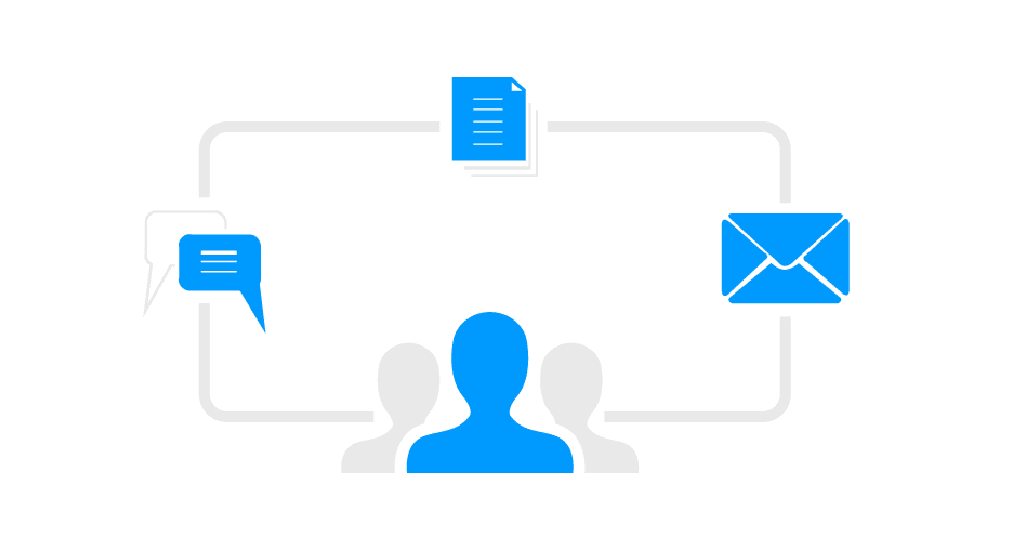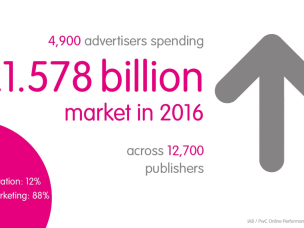7 Affiliate Marketing Mistakes to Avoid in 2020
Written by Emma Sharp on 11 minute read
Now that the dust has settled and you’re finally feeling comfortable that the date ends with the numbers ‘2020’.

It’s probably a great time to take a look at your digital strategy and within it, your affiliate marketing strategy for the year ahead. Whether you're an advertiser already who has set up a programme and it isn’t getting the results you were looking for or you’ve decided to become an advertiser and are just about to start out, there are a few key areas you can look toward to ensure you avoid making some serious affiliate marketing mistakes.
1. Your website
Your affiliates are most likely digital people. Before deciding if they’d like to create a partnership with you, they’ll probably head straight to your website to assess your brand and products. This is a vital part of how all potential publishers, partners and clients perceive you and so it must represent you well.
When you’re looking for new publishers, you want to ensure their brand values align with your own. Similarly, publishers want to know that by promoting your brand they won’t be tarnishing their own as your business will be a virtual extension of theirs.
There are some vital elements to clean up or look at when considering how not only your potential affiliates but also your potential clients are viewing your website.
Bad design
Taking a long, hard and most importantly, objective look at the design of your website can be a challenging thing to do as a business owner. You have probably invested a lot of resources to create something you think suits your brand image. Whilst we don’t want to take away from the effort you’ve put in, it may not be serving you in the best way when it comes to digital marketing and your affiliate marketing programme.
Your focus should be on the user experience, also known as UX. Studies show that overly complicated layouts, excessive use of animated or ‘fancy’ page elements and too many different colours can quickly turn away visitors.
You also want a potential customer to be able to answer the questions they have about you or your product in as few clicks as possible. It’s 2020 and attention spans are short. If you can’t answer their queries easily, one of your competitors probably will. You’ll need to get into the mind of your customer and think about what information you can provide them, in a simple way, to remove the barriers to understanding your brand.
‘404 – Page Not Found’
Also known as dead pages, Google doesn’t like these and neither do your customers. You should be aiming to not have anything dead on your site. Potential affiliates and customers find these errors really frustrating so you should attempt to remove them wherever possible. This could involve asking your web developer or in-house expert to create redirects for the pages in question. If backlinks have been created to this page, then either reach out to those who have created them and ask them to link to a different page or ensure you have redirects in place.

Page load speed
This is one of the main things that can lead to a customer leaving your website. Google has stated that though a page should load in two seconds or less, they aim for just half a second. They’ve also stated publicly that it is a factor that is used to rank websites on the SERP. If you’re focusing on your SEO (and you always should be looking at ways to improve this) then page load speed should be on your priority list.
But how do you find this data? Though there are many tools available to test page load speed, at Awin we think it’s best to go straight to the source and use Google’s PageSpeed tool. Compressing or downsizing images on your site, minimising animation, plugins and complicated design elements and optimising your website code are some great ways to improve too.
Google Adsense and other advertising
Are you attempting to make extra money from your website by having ad placements? This could, unfortunately, be turning publishers away. Aside from additional visual clutter to a page, which detracts from everything else on site, it might also give the wrong impression about your brand.
You will see some big commerce sites with these ad placements and they are a large revenue stream for them, but for smaller sites, this approach has the potential to be a sticking point for new publishers as they might be driving revenue for brands they have not agreed to work with.
Does it convert?
The chances are if your website is not converting for you it won’t do a great job at converting for your publishers, no matter how wonderful they may be.
To pinpoint why your conversion rate is low, head to your analytics and assess your metrics. Can you see where people are falling out of your page funnel? This is really important if you’re an e-commerce site. If you can see a pattern forming, ask yourself some honest, objective questions about why that might be and what you can do to fix it.
2. Affiliate Product Agreement
Having a thorough agreement for new publishers to understand is vital for your business and your affiliate marketing campaign. Potential publishers may not always agree with all the terms and could try to negotiate an agreement more suited to them, but either way, it’s important to establish clear boundaries.
When creating your programme you should consider the following:
- Trademark terms of use
- Commissions and rewards
- Paid search bidding restrictions
- Content plagiarism
- Vouchers
Without a strong affiliate product agreement in place misconceptions about what is expected of both the publisher and the advertiser can form. It could potentially lead to behaviour that damages your brand’s reputation. These agreements protect both sides from misunderstandings or misconduct.

3. Content is king
You’ll always hear that phrase cropping up when it comes to digital marketing. That’s because it’s true. Your responsibility as an advertiser doesn’t end once you’ve got a publisher onboard your affiliate programme. To see a truly successful programme, you should try to provide your affiliates with as much high-quality promotional material as possible. This will not only help them accurately promote your brand, but assist them in driving sales with the relevant information. These can include, but are not limited to:
- Content and text samples
- Good quality images
- Videos, both with and without an audio element
- Text links
- Banners of varying sizes
- Voucher codes (Awin can track these)
4. Your affiliates are your partners
Your affiliates are your partners. As experts in their own field, it’s important to respect their skills and knowledge, after all, that’s why you chose to work with them. While on the one hand providing guidance to your partners is sometimes necessary, strike a balance by setting boundaries. There are lots of affiliate programmes they could be joining, so offer rewards and incentives as you work with them to achieve a common goal. It’s worth having open conversations with your affiliates about how they work best.
5. Communicate often and openly
Get to know your affiliates, like you would any other partner that makes money for your business.
Getting in contact from time to time with communications they actually find valuable can be beneficial to both parties. If you can add a personal touch that shows you appreciate how much hard work they’re putting in behind the scenes, that’s even better. On the other end of this scale, don’t pester them when you don’t receive a response. Some people just don’t operate that way, but that means you could have a dialogue about effective ways of working together.
If queries come through try to answer them as quickly as possible as prompt efficiency shows you care about your partners and their business. When possible, it’s always advantageous to make an extra effort to help them.
Letting your publishers know early on about decisions you’ve made in your business shows your loyalty to them and that you consider them in your overall strategy. If you have exciting news about a new product or service or have chosen to discontinue a product let them know so they can change their own strategies.
Certain affiliates may not be meeting your key performance indicators, not because they don’t have the potential to succeed, but because there are different ways to measure success. Only working with the top sales generating publishers isolates those who, with a little more assistance, could do incredible things. Reach out and try to understand where they might be running into issues. If an affiliate has become inactive, contact them to try to understand why instead of terminating their contract straight away. All good relationships work around one key principle: communication is key.

6. Setting realistic affiliate commissions
Even if a publisher feels passionate about your brand, the main driver in an affiliate programme is the commissions, otherwise, they would be a brand ambassador working for free. Appropriate commission rates ensure publishers are motivated to drive sales to your business. Avoid setting unrealistic return dates that are too far into the future, delaying payments to your affiliates, lowering commissions unnecessarily or voiding commissions and transactions without legitimate reasons.
Ideally, you want to work with them to understand where they add value in the purchase journey, as it may not be at the final click. In this instance, you might want to consider alternative payment models that better suit their publisher type. For example, a content-based publisher might not earn the last click since they appear early on in the customer purchase process, so it might be beneficial to pay them a commission for sales they’ve assisted. Awin offers flexible commission options to reward publishers who create influence higher up in the funnel, such as cost per click, assist or impression.
7. Programme management and monitoring
The ‘set and forget’ approach is a major affiliate programme mistake. Whilst it’s up to you as the advertiser how often you check in to your dashboard and take a look at the numbers, the more often you do this, the more agile your programme becomes. This gives you the opportunity to pivot if needed, by either changing your strategy or removing those publishers who aren’t providing any value.
Using automated messaging for approving or disapproving affiliate applications doesn’t start the relationship off well. As previously mentioned, a personal touch can create more trust. It also allows you to understand the affiliate’s brand who will be promoting your product or service. Allow people to reapply to the programme after a certain amount of time, as they may change and develop in a way that could eventually benefit your business.
It’s wise to keep an eye on how publishers are interpreting and using your content, to ensure it aligns with your brand and values. Even with the best of intentions, sometimes these things don’t match up.
From time to time you may be faced with a situation where you can’t seem to reach common ground with a publisher. If you have had conversations back and forth about this, always keep written evidence of this. If you believe there has been a serious violation of the terms laid out in your affiliate programme conditions and you have collected evidence, you may be able to withhold funds. Using an affiliate network, such as Awin, has many advantages as we can assist with resolving the situation through our dedicated Publisher Services department.
Make your affiliate programme work for you
All affiliate programmes are unique and should be treated as such. Using a platform like Awin, where you can see real-time data, it allows you to make changes when necessary. If a programme isn’t working as you’d hoped, take some time to consider the above points and decide where you can make the most effective changes for your programme and your business’ success.



